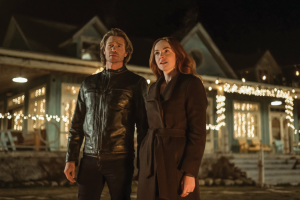 By Joan Chittister (Bluebridge, 2008)
By Joan Chittister (Bluebridge, 2008)
"Few persons know how to be old," said François La Rochefoucauld more than 300 years ago, and it is still true. To help you learn, Joan Chittister, a distinguished lecturer and writer on the spiritual life, offers a generous and accessible message about growing old. At 72 she stands at the threshold of what she argues may be the most interesting time of life, recognizing some of the concerns, fears, and foibles of the age and addressing each with wisdom.
"Let us then be up and doing" is the maxim that guides us through our work years-but in the later years of a well-lived life, our concern is no longer about doing, it is about being. "When you look within, what do you see?" Chittister asks. Someone generous, honest, merciful, caring? What will be your legacy? The word has nothing to do with wills, lawyers, bank accounts, or who gets Aunt Martha's amethyst earrings. Your legacy is the "immaterial enrichment your life has contributed to those who follow: what you have loved, cared for, valued, or given away."
Chittister suggests that you dip into this book of meditations as the moment suggests, looking among the chapter headings for something relevant. In "Sadness" Chittister's response to a famous Sir Francis Bacon adage ("Old wood is best to burn, old wine to drink, old friends to trust, and old authors to read") could serve as the keynote to the entire book: "Running in the ruts of the road because anything beyond the familiar is too much trouble may be the easy way, but to age without energy or purpose is simply to get old rather than to age well." As old experiences are lost to us, she urges us to be open to new ones.
Newly arrived in the world of "old age," Chittister hopes that she may be allowed to revise her book when she is 90. Maybe when she reviews the segment called "Loneliness," she could introduce it with this sage line of her own: "Someone who is useful is never lonely."
This article appeared in the February 2009 issue of U.S. Catholic (Vol. 74, No. 2, page 45).













Add comment